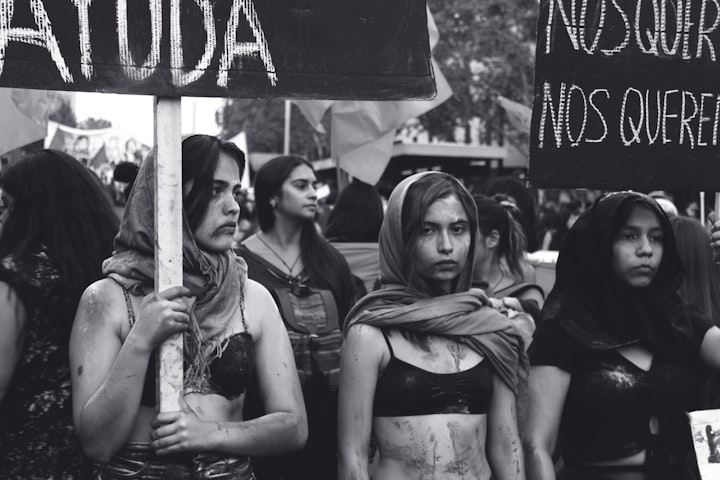
Women's history is full of pioneers in the fight for equality in the United States. From recruiting Father Founders and suffragists to Title IX and early female politicians, American women moved on equally. History shows that women have made great strides in this fight, including women and progress towards equal employment and employment opportunities.
The struggle for women in the United States began in the mid-nineteenth century with a women's rights movement. Although the organization has different goals, its leaders have chosen to focus on finding women. The women’s movement provided the political experience to many of the first pioneers in Congress, but their internal divisions symbolized the ongoing tensions between women and Congress that arose after the passage of the 19th Amendment.
Like many other translators of the time, Stanton and Susan B. Anthony was a Massachusetts teacher who actively campaigned for the abolition of slavery. Stanton and Anthony founded the National Women Suffrage Association (NWSA) and led their efforts to change the organization's policies. In 1869, Susan Anthony, a strong and direct advocate for women's rights, founded the National Woman Suffrage Association with Elizabeth Cady Stanton.
At the same time, thousands of young women in universities are taking an active part in the fight for war and human rights. But many have found that their efforts have been thwarted by men who believe that leading these organizations is their business and that women's participation is limited to preparing food and using mimeographs.
It was not until the 19th amendment passed in 1919 that women across the country gained the right to vote. During the nineteenth century women began to demand, demand, protest and demonstrate the right to vote - the right to participate in government and their law. During this time, the rights were extended to many countries, and women began to campaign for their rights.
The Women's Rights Movement, also known as the Women's Liberation Movement, a diverse social movement founded in the 1960s and 1970s in the United States, demanded equal rights, opportunities, and greater freedom for women. The first wave of feminism in the nineteenth and early twenties focused on women's rights, especially suffrage (see feminism) and the second wave of feminism, but also affected all areas of women's experience, including politics, work, family, and gender. In the late 1800s and early 1900s, women's and women's organizations did not work for the right to vote; instead, their work was based on economic and political equality and social change.
Organized activism in favor of women continued between the third and fourth wave of feminism during the 1990s and early 2010. In 1998, during a celebration of the 150th anniversary of the Women's Rights movement and because of the significant changes women had made, the women agreed to call for the International Covenant on Women's Rights. For more discussion about modern female and historical activists and motivators, see Feminism.
The dolls and women met in Seneca Falls, New York on May 4, 1912, at the Suffrage Parade in New York City, Congress Overview Library of amendment 19 of 1848. Elizabeth Cady Stanton and women such as Susan B. Anthony, Lucy Stone, and Sojourner Truth traveled the world as pastors and editors for the next forty years. It was a legitimate women's movement, delivering speeches, addressing Congress, and pressuring government officials to respect women.
The first amendment to the constitution ensures that women were introduced to Congress in 1878. Although many women were able to go to the polls, the amendment did not give everyone the right to vote. The 19th amendment does not guarantee that all men and women in the United States can vote.
One hundred years after the passing of the 19th amendment, nearly half of Americans said that giving women the right to vote was a milestone in improving the role of women in the country.
The majority of adults in the United States say the country has not gone far enough when it comes to giving women the same rights as men, but for the most part believes progress has been made in the last decade, according to a new Pew Research Center research. Among those who believe the country is working hard for gender equality, 77% say that sexual harassment is a major barrier to equal rights for men. Among women who say the United States has never made enough progress in gender equality, those without a bachelor's degree are less likely to go to college than those who say the socially different expectations are a major obstacle (81% vs. 67%) and very few women in power positions (80% to 66%).
Experts point to aspects of the Suffrage Movement that are largely overlooked or under investigation, such as the racism perpetrated by black people during the movement and the failure of the 19th Amendment to extend women's voting rights.
In 1890, Wyoming - the 44th country to join the Union - became the first province to grant women the right to vote. A total of 61 women and 32 men, including Frederick Douglass, signed the Declaration, a move that spanned decades of activism that led to the adoption of the 19th Amendment, which gave women the right to vote. This includes women who were not known as US citizens - many Native American and Asian women who do not live in the provinces as well as citizens of the District of Columbia and Puerto Rico.
Women's rights are the rights and qualities demanded by women and girls. They formed the basis for the promotion of women's rights in the 19th century and the women's movement of the 20th and 21st centuries.
Women's rights are different from the larger human rights ideologies in that they claim that there is a natural and traditional bias against the use of women's and girls' "rights" in favor of men and boys. In some countries, women's rights are enshrined in institutions and supported by local laws and customs, while in others they are ignored or suppressed.
About the Creator
Radha Karki
I am very curious ar learning new things, love to read books, paintings, art, and love singing too.





Comments
There are no comments for this story
Be the first to respond and start the conversation.